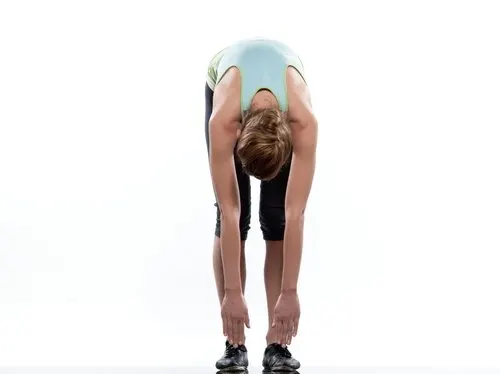How to Relieve Sciatic Nerve Pain With Exercise

Is it possible to relieve sciatic nerve pain through exercise? Yes, it is. However, it’s important to know how to carry each exercise out in a safe and healthy way to be sure to find relief and not make things worse.
Sciatic nerve pain affects a person’s ability to carry out everyday activities. Sometimes, the discomfort can be so limiting that simply bending over to pick something up off the floor becomes nearly impossible.
Many people experience this problem on a frequent basis. And with that in mind, we want to share some exercises that can help relieve sciatic nerve pain.
The sciatic nerve is large–it starts at the lower back and ends at the leg. But don’t confuse sciatic nerve pain with “sciatica.” Sciatic nerve pain is just the term we use to define pain in this area, it’s not an illness in and o itself. Today, we’re going to tell you about how you can relieve sciatic nerve pain with certain exercises and get your life back to normal.
What do you need to know about sciatic nerve pain?
A 2011 study explains that the sciatic nerve begins in the lumbar region near the hip. It then extends down to the back of the lower leg. In fact, it’s the longest and thickest nerve in the human body. What’s more, it’s mixed because it contains motor and sensory fibers.
At the same time, sciatica is a symptom that reflects problems with the sciatic nerve. It manifests itself in the form of numbness, tingling, and shooting pains. It’s common among middle-aged people between the ages of 30 and 50 years of age. And the causes include normal wear, excessive effort, and a sudden accumulation of pressure.
Sciatic nerve pain normally gets worse at night, after spending hours in the same position (either standing up or sitting down), walking, or bending your back backwards. Here are some other potential causes:
- Herniated disc
- Degenerative arthritis
- Vascular problems
- Tumors that compress the nerves of the spinal chord
- Injuries
- Infections
- Inflammation
Here are the symptoms of sciatic nerve pain:
- Pain in the lower back, which extends to one or both legs
- Weakness in the leg muscles, glutes, and toes
- Major discomfort when sneezing or coughing
- An increase in pain when stretching or bending down
- Tingling or numbness in the legs
- An inability to remain seated for a long time
Exercises to prevent and relieve sciatic nerve pain
If you’ve ever had this problem, you probably already know that it’s a nightmare and wouldn’t wish it upon your worst enemy. The pain can be so bad that it stops you from doing daily activities, and you can’t even figure out what positions to go into to stop the cramping.
Rather than remaining immobile and avoiding exercise, patients can take advantage of certain exercises aimed at relief. In order to carry them out, you should talk to your doctor or physiotherapist and ask for specific guidelines.
Pilates swimming exercise
You should do this exercise as slowly as possible, and you have to pay attention to the signs your body gives you.
But don’t give up doing the moment you feel pain or discomfort. The point is just to be careful and not put your waist under too much pressure.
- Lie face down on a mat or on the ground.
- Place your arms in front of your head and keep your legs out straight.
- Lift your right leg at the same time as you lift up your right arm.
- Your head will also lift a little, but the idea is that your torso should not move from the ground.
When your leg and arm reach as high as they can go, hold that position for 3 seconds before returning to your initial position. Do the same with your left leg and right arm. Repeat ten times on each side of your body and pay attention to your breathing.
Back stretch

Relieve sciatic nerve pain with this exercise by standing up straight with your legs together. Then bend down as if you’re about to touch your toes, like in the photo above. But with this exercise, try to touch the floor, not your toes. If you can’t, no problem, just stretch as far as you can. The idea is to improve progressively.
You might like: 4 Basic Elements of Any Good Stretch: Do It Right!
During this exercise, your back will form a kind of “arch” that will stretch your muscles and your sciatic nerve. As you return to your starting position, you’ll need to lift your back slowly, otherwise you could become dizzy or cause a drop in your blood pressure.
Once you’ve finished the first rep, do five more. On each occasion, try to reach further down with your arms.
Leg stretch
Sciatic nerve pain usually starts in the lower back and continues to the leg. So, it’s good to stretch your leg when you first notice tingling and aches and pains in this area.
There are different types of leg stretches you can do.
- One example is to lift your right leg up onto a table or a chair, but keep your left leg straight.
- Bring your arms forward so that your fingers touch the tips of your toes, or as close as you can.
- Stay in this position for several seconds and then return to your starting position.
- Do this two or three more times.
- When doing this exercise, you’ll feel the stretching of your lower leg and glutes.
Lower back exercise
Lower back pain caused by the sciatic nerve can paralyze you for several minutes at a time. This is why you need to stretch this area as soon as the discomfort starts.
- Lie down on your back. It could be either on the ground or on a mat.
- Stretch your legs and cross your arms. Extend your arms to the sides and make sure your palms are facing down.
- Bend both of your knees, but keep the soles of your feet on the floor.
- Gently and slowly swing both knees to the right until they touch the floor.
- Try to not lift your left shoulder or arm.
- Stay in this position for several seconds.
- Return to your initial position and then start on the other side of your body.
- Repeat this 5 times.
Hamstring stretch

Sciatic nerve pain can spread down the whole leg and reach your foot. The following exercise can help reduce the pressure you feel in this area.
- Sit on the floor with your back straight and your legs out straight. There should be some space between both of your legs.
- Turn your shoulders to the right and lean forward as if you’re trying to touch the tips of your right foot.
- Your head should touch your right knee.
- Stay in this position for several seconds, then return to the initial position.
- Now do this on the left side.
- After every rep, you should try to stretch a little farther than you did before.
Waist stretch
This is the last exercise to help relieve sciatic nerve pain for today.
- Lie down on a mattress or on the floor, then bend your knees and bring them as close as possible to your chest.
- Keep your knees in place by holding your legs with both arms, as if you’re in a fetal position.
- Squeeze your knees a bit.
- Let your legs go and then stretch them out.
- Repeat this five or six times to begin.
Are you ready to exercise?
If your doctor has told you that you can try these exercises to relieve sciatic nerve pain, start out slowly. Execute each movement gradually in order to take maximum advantage of death position. Remember, postural hygiene is always important, but especially while exercising.
Keep in mind that doing a little exercise will do much more than just help you feel better. It will also allow you to return to many activities, like walking, bending over, sitting down, and even sleeping more comfortably.
All cited sources were thoroughly reviewed by our team to ensure their quality, reliability, currency, and validity. The bibliography of this article was considered reliable and of academic or scientific accuracy.
- Flor Ángela Tobón Marulanda; Julián Vallejo Maya; León Mario Moro Cortés (2011). Lesión del nervio ciático: aproximación médico legal (Colombia). http://www.scielo.org.co/pdf/cesm/v25n1/v25n1a07.pdf
- Sladjana, U. Z., Ivan, J. D., & Bratislav, S. D. (2008). Microanatomical structure of the human sciatic nerve. Surgical and Radiologic Anatomy. https://doi.org/10.1007/s00276-008-0386-6
- Rigaud, M., Gemes, G., Barabas, M. E., Chernoff, D. I., Abram, S. E., Stucky, C. L., & Hogan, Q. H. (2008). Species and strain differences in rodent sciatic nerve anatomy: Implications for studies of neuropathic pain. Pain. https://doi.org/10.1016/j.pain.2008.01.016
This text is provided for informational purposes only and does not replace consultation with a professional. If in doubt, consult your specialist.








